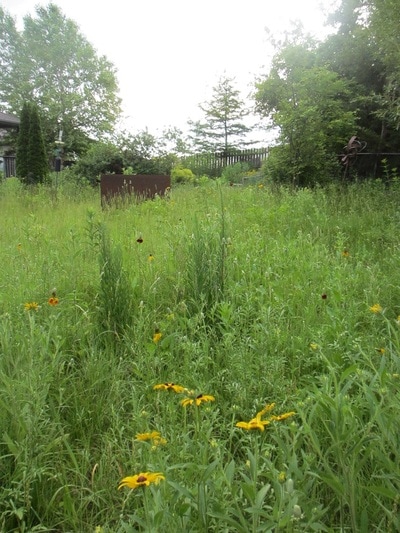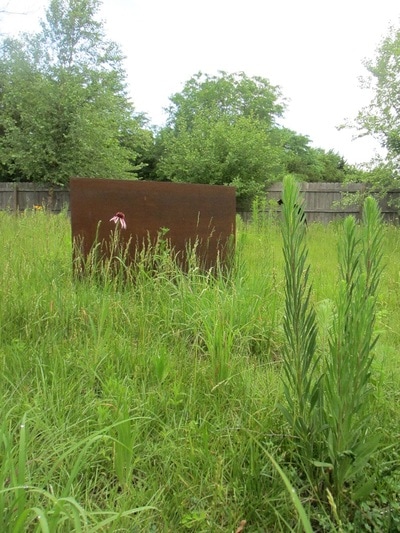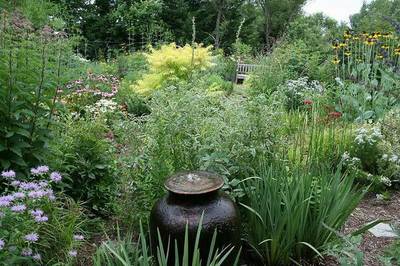This spring, 2017, I mowed until about early to Mid may and have since let it do its thing. Little bluestem and sideoats grama are now by far the prominent grass, which is all the bright green in the above images. I sowed some pioneer forbs that I thought I'd need to shade out the fescue -- mexican hat coneflower and black-eyed susan mostly -- but the short prairie grasses are doing the job for me. Yes, the fescue lawn has bloomed and gone to seed, but I don't believe it will be able to procreate.
Over time I will:
1) Mow a path through the space (I'd like some things to set seed this year)
2) Remove / thin more aggressive species like wild senna
3) Deadhead indian grass and big bluestem so they don't take over (I only have a few of each for winter structure)
4) Thin seedlings of some more architectural and seasonal-blooming plants to preserve a slight sense of order and rhythm that even in a wilder space our eyes look for. Clumps and drifts. Think about a prairie, and how the plants guide you, how we look for patterns to connect to and navigate the landscape. It doesn't take much editing, and in the end, the plants are still allowed to move and do their thing -- to show me what they want and need.
5) Mow it all down each March (I'd love to burn).
Stay tuned to see this space for progress week by week. The asters will be especially spectacular this year. Come on, fall!
And below are a few more shots from out front, where some 400' of unused lawn that burned even worse was taken out in favor of two more designed beds. The landscape had a blueprint and allows for some plants to self sow to fill in the gaps over time. Not that the hellstrip was left to blend into the neighborhood, and a 6' wide lawn path bisects the two beds, showing purpose and human use while tying into the rest of the neighborhood. Both the front and back areas are never watered. Both provide winter habitat. Both represent a wildlife refuge and an island that connects to a tallgrass prairie one mile south.

















 RSS Feed
RSS Feed

